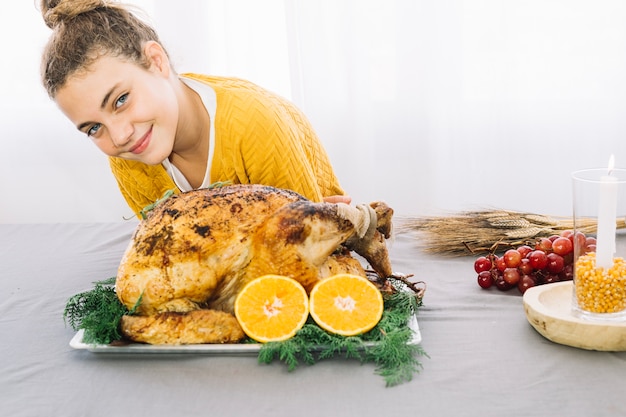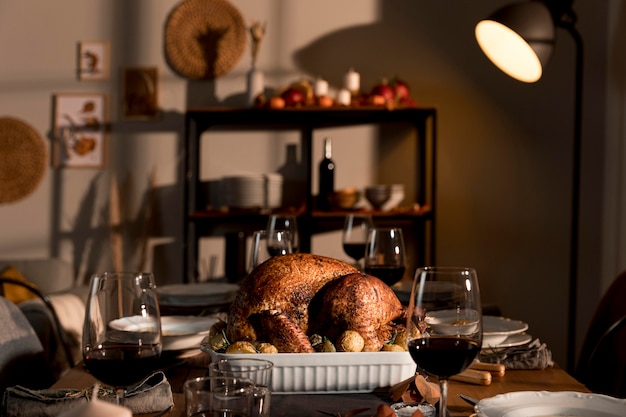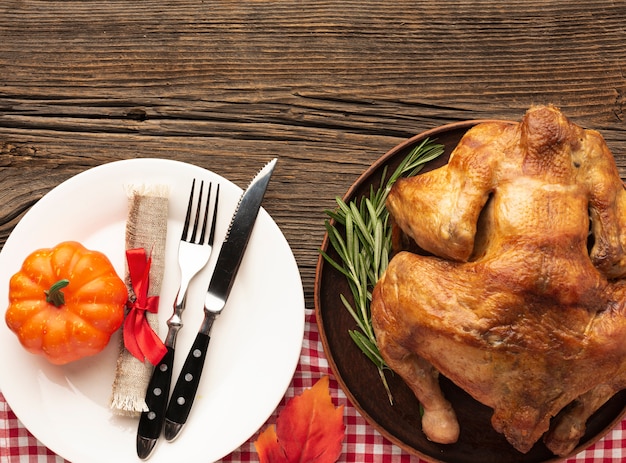(Part 1) The Turkey Tango: Getting Started

The first step in any great turkey adventure is prepping the bird. This might sound like a simple task, but it’s crucial for ensuring a juicy, flavorful final product. Let's start with the basics:
Prepping the Turkey:
- Pat it dry: Take your turkey out of the fridge and give it a good pat down with paper towels. We want to get rid of any excess moisture that could lead to a soggy bird.
- The giblet situation: Inside the turkey cavity, you’ll find a package of giblets – the heart, liver, and neck – that you can use for making gravy or stock. Remove them and set them aside.
- Butter up: Now it’s time to give your turkey a little pampering. Rub a good amount of butter or olive oil all over the bird, both inside and out. This will help to keep the turkey moist and tender during cooking.
Now, for the fun part – seasoning! I’m a firm believer in keeping things simple with a blend of salt, pepper, and a few herbs. A touch of rosemary, thyme, or sage adds a beautiful aroma and depth of flavour. But if you want to get adventurous, feel free to experiment with paprika, garlic powder, a pinch of cayenne for a bit of heat – the possibilities are endless! Remember, though, that the turkey has a natural flavour that we want to enhance, not overpower.
(Part 2) Turkey Time: The Big Question

Now comes the big question: how long do we cook this 13-pound turkey? It's not an exact science, as ovens can be temperamental, but I’ve got a trusty rule of thumb that's always served me well: aim for 3-4 hours at 325°F (160°C).
However, the cooking time can vary depending on a few key factors:
Factors Affecting Cooking Time:
- The oven: As mentioned, ovens vary in temperature. You might need to adjust the cooking time slightly, keeping an eye on the turkey to ensure it’s browning evenly.
- The stuffing: If you’re planning on stuffing the turkey, add an extra 30 minutes to the cooking time.
- The size: A 13-pound turkey is a beast, but if you have a smaller bird, you can reduce the cooking time accordingly.
You might be thinking, "How do I know when this bird is truly done?" Thankfully, we have technology on our side!
(Part 3) The Magic of the Thermometer

Investing in a good meat thermometer is the best gift you can give yourself (and your turkey). It’s a game-changer, eliminating the guesswork and ensuring that your bird is cooked perfectly. Simply insert the thermometer into the thickest part of the thigh, making sure it doesn’t touch the bone, and check the temperature.
The Golden Number:
The magic number we’re looking for is 165°F (74°C). Once your turkey hits that temperature, you know it’s ready to be carved and devoured.
(Part 4) The Turkey Rest: A Crucial Step
Now, you've cooked your turkey to perfection, and it’s time to carve, right? Wrong! Before you even think about wielding your carving knife, remember that the turkey needs a good rest. Imagine it like a marathon runner – they need time to recover and rehydrate after the race, and so does your turkey.
Let the turkey rest for at least 30 minutes, ideally covered with a sheet of foil. This allows the juices to redistribute throughout the meat, resulting in a succulent, juicy turkey that will have your guests singing your praises. While the turkey is resting, you can get a head start on the sides – whip up that mashed potato, make the gravy, and get those cranberries simmering.
(Part 5) The Art of Carving: A Turkey Masterclass
Okay, the turkey is rested, and you’re ready to carve. This is where your culinary skills get put to the test, but don’t fret, I’ve got you covered.
Carving Tips:
- Sharpen your knife: A sharp knife is your best friend in the carving game. It makes the process easier and less stressful.
- Start with the legs: Remove the legs first, using your knife to carefully cut between the thigh and the breast. Then carve the legs into individual pieces.
- Breast time: Now for the breast. Remove the breastbone, then carve the breast into slices, working from the outside in. Be careful not to slice too thinly, as you want to maintain a good portion size.
- Don’t be afraid to ask for help: If you’re struggling, don’t hesitate to ask a friend or family member for help. There's no shame in teamwork, especially when it comes to a magnificent bird like this.
(Part 6) The All-Important Gravy
No turkey dinner is complete without a rich, flavourful gravy. There’s something magical about the combination of turkey drippings and a creamy, seasoned gravy that elevates the entire meal.
Gravy Tips:
- Save the drippings: As the turkey roasts, collect the drippings in a saucepan. These precious juices will be the foundation of your gravy.
- Deglaze the pan: Once the turkey is out of the oven, pour a bit of wine or broth into the roasting pan and scrape up any bits stuck to the bottom. This will add extra flavour to your gravy.
- Thicken it up: Use cornstarch or flour to thicken the gravy to your desired consistency. Start by adding a small amount and whisking it in, then add more as needed.
For an extra touch of flavour, add a few fresh herbs to your gravy – rosemary, sage, or thyme are always a good choice. You can also experiment with other spices and flavours to create your own signature gravy recipe.
(Part 7) The turkey leftovers: A culinary adventure
So, you’ve had your feast, and now you’re faced with a mountain of leftover turkey. But don’t despair! This is where the real culinary adventure begins. Leftover turkey can be transformed into a whole new array of delicious dishes.
Leftover Turkey Inspiration:
- turkey sandwiches: Slice up the leftover turkey and pile it high on some bread with cranberry sauce, mayo, and a bit of lettuce. It’s a classic for a reason.
- turkey soup: Throw the leftover turkey, vegetables, and broth into a pot and simmer until you have a comforting, hearty soup. Add noodles, rice, or barley for extra texture.
- Turkey casserole: Combine leftover turkey with pasta, sauce, cheese, and vegetables for a satisfying and easy casserole.
- turkey salad: Chop up the turkey and combine it with mayonnaise, celery, onion, and other ingredients for a delightful salad. Serve it on bread, crackers, or lettuce leaves.
And if you’re feeling overwhelmed, don't be afraid to turn to the internet for inspiration. A quick search for "turkey leftovers recipes" will give you a plethora of ideas, from turkey pot pies to turkey tacos.
(Part 8) A Turkey Tale: A Christmas To Remember
Speaking of turkey tales, I can't resist sharing a little anecdote. One year, my Aunt Maggie decided to stuff the turkey with a whole loaf of bread. It was a disaster, a culinary nightmare! The stuffing never quite made it out of the turkey, and we spent the rest of the evening picking bread crumbs out of our teeth. But you know what? It was hilarious.
And that's what I love about cooking a turkey. It's about creating memories, about gathering with loved ones, and sharing a delicious meal. Even if things don't go exactly to plan, it's all part of the fun.
(Part 9) The Turkey Table: A Celebration of Food
There’s something truly special about a turkey dinner table. It's a place where families come together, where stories are shared, and where laughter fills the air. I always love the moment when the turkey is carved, and the aroma of roasted turkey and gravy fills the room. It’s a sensory experience that transports you back to childhood memories of Christmas dinners past.
But it's not just about the food – it's about the people you share it with. It’s about those special moments of connection and togetherness that make the holidays so special. And let's be honest, what’s a Christmas dinner without a bit of festive cheer?
(Part 10) A Final Word: Relax and Enjoy
So, my friend, go forth and conquer your turkey! Follow these tips, relax, and enjoy the process. Remember, it’s not about perfection, it’s about creating a special meal with loved ones. And hey, if things don’t go exactly to plan, just laugh it off and enjoy the journey! After all, that’s what makes the holidays so memorable.
FAQs
1. How do I know if my turkey is done without a thermometer?
While it's always best to use a thermometer, if you don't have one, there are a few visual cues to check for doneness:
- Checking the juices: When you poke the turkey with a fork, the juices should run clear, not pink.
- The thigh should move easily: When you wiggle the thigh, it should move freely and not feel tight.
- The skin should be golden brown: The skin should be a nice golden brown colour, not pale or raw-looking.
However, these methods are less reliable than using a thermometer, so use them with caution.
2. What if my turkey is too dry?
A dry turkey can be a bit of a disappointment, but there are a few things you can do to remedy the situation:
- Baste it: During the cooking process, baste the turkey with butter, broth, or wine to keep it moist.
- Cover it: Cover the turkey with foil during the last hour of cooking to prevent it from drying out.
- Add a little gravy: A generous amount of gravy can help to make a dry turkey more palatable.
And for future reference, try cooking the turkey at a lower temperature or for a shorter period.
3. Can I cook a turkey at a lower temperature?
Yes, absolutely! Cooking a turkey at a lower temperature can help to ensure that it stays moist and tender. For a 13-pound turkey, you can cook it at 300°F (150°C) for about 4-5 hours. However, you will need to adjust the cooking time accordingly.
4. What if my turkey is undercooked?
If your turkey is undercooked, you’ll need to cook it for a longer time. Stick the thermometer back in, and continue cooking until it reaches an internal temperature of 165°F (74°C).
5. Can I freeze a turkey before cooking it?
Yes, you can freeze a turkey. It’s best to freeze it whole, wrapped tightly in plastic wrap and then foil. To defrost a turkey in the refrigerator, allow 24 hours for every 5 pounds of turkey. You can also defrost it in cold water, but it’s important to change the water every 30 minutes. Never defrost a turkey at room temperature, as this can lead to bacteria growth.
Remember, the key to a successful turkey is to approach the process with a relaxed and positive attitude. Enjoy the journey, and don't be afraid to experiment and have fun!
Everyone is watching

Prime Rib Roast Cooking Time Chart: Per Pound Guide
Cooking TipsPrime rib roast. Just the name conjures images of lavish dinners, crackling fires, and hearty laughter. It’s ...

How Long to Bake Potatoes in the Oven (Perfect Every Time)
Cooking TipsBaked potatoes are a staple in my kitchen. They're incredibly versatile, delicious, and surprisingly easy to m...

Perfect Rice Every Time: The Ultimate Guide to Cooking Rice
Cooking TipsAs a self-proclaimed foodie, I've always been a bit obsessed with rice. It's the foundation of countless cuisi...

The Ultimate Guide to Cooking Asparagus: Tips, Techniques, and Recipes
Cooking TipsAsparagus. The mere mention of this spring delicacy conjures up images of vibrant green spears, crisp and burs...

Ultimate Guide to Cooking the Perfect Thanksgiving Turkey
Cooking TipsThanksgiving. Just the word conjures up images of overflowing tables laden with delicious food, the scent of r...
